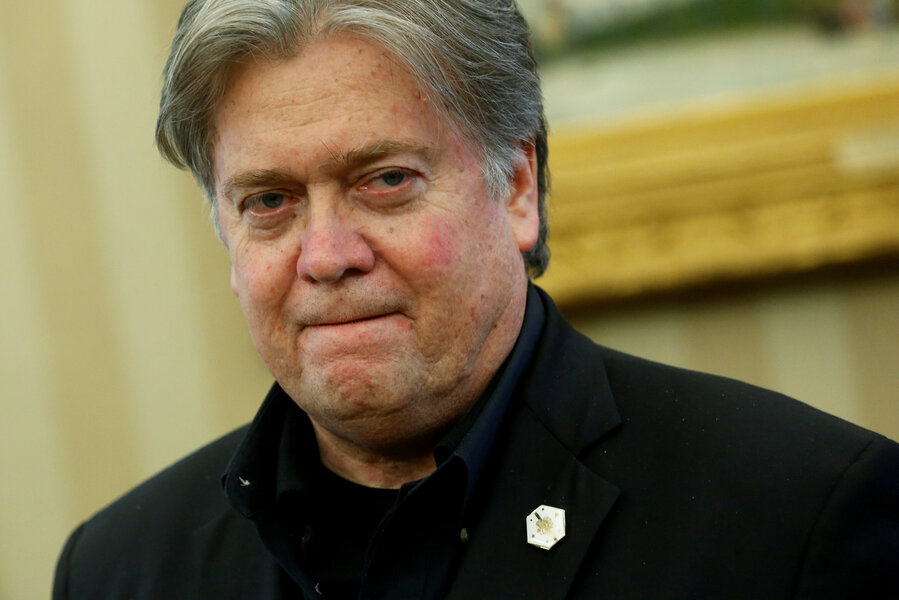ACTION
Presidential Memorandum: Organization of the National Security Council and the Homeland Security Council includes three main actions. It separates (again) the staffs of the NSC and HSC; it allows the president’s chief political strategist, Steve Bannon, to attend any NSC meeting as well as participate in the highly influential Principals Committee; and it denies the director of national intelligence (DNI), former Indiana Sen. Dan Coats, and the chairman of the Joint Chiefs of Staff, Marine Gen. Joseph Dunford, permanent seats at the Principal Committee.
ANALYSIS
Since its inception in 1947, the NSC has been organized differently under each president. But Trump’s reorganizing of the NSC is “particularly significant,” Kelly Magsamen, NSC director for Iran under Presidents George W. Bush and Obama, writes in the Atlantic. While Mr. Bannon – the former publisher of Breitbart, which publishes white nationalist, anti-Semitic, and misogynistic material – is highly controversial, to include any political operative in such discussions is highly unusual. “To place a purely political operative on the NSC – alongside actual Cabinet members with national-security responsibilities or expertise – is an unprecedented move with profound implications for how national-security policies are developed and executed,” she writes. “It may be likely that Trump would consult Steve Bannon regardless, but giving him a formal seat at the NSC sends a chilling message to men and women in uniform, to diplomats and intelligence professionals – that Bannon’s political advice matters as much as theirs.”






